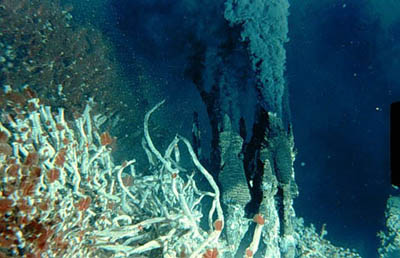Hydrothermal vent with tubeworms in the foreground
Click on image for full size
Courtesy of NASA
Life in the Deep Ocean
The deep ocean can be a difficult place to live.† The water is very cold and itís always dark there. Sunlight can not get down that far. Itís not always easy to find food. For some animals, food comes from the bodies of dead fish, dead plankton, and even dead whales that rain down from the shallower waters above.
But there are two very different environments in the deep ocean where many living things can survive. These are cold seeps and hydrothermal vents.†
Cold seeps are areas where natural gas and other chemicals are released into deep ocean water. Tiny microbes make energy from the chemicals. These microbes are food for many other creatures like clams, mussels, shrimp, crabs, bacteria, and tubeworms.
Hydrothermal vents are another type of deep sea environment. At vents, water is very hot. It is heated by volcanic activity at spreading ridges. The hot water picks up chemicals as it is heated. Certain types of microbes are able to turn the chemicals from the hot water into the energy they need to survive.† Many other types of living things including fish, shrimp, giant tubeworms, mussels, crabs, and clams live in this environment too.† Some of them, like mussels, clams, and the giant, 2-meter (6-foot) tubeworms, get the nutrition they need from microbes living in their bodies. Others, like shrimp and barnacles, eat microbes from the water.†
Last modified October 30, 2008 by Lisa Gardiner.
You might also be interested in:
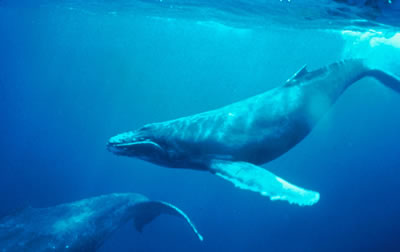
The open ocean is the largest area of the marine ecosystem. It reaches from coasts to the middle of the ocean. The living things that survive in the open ocean need to have a way to float or swim in ocean
...more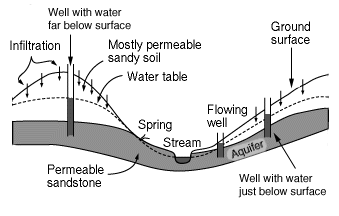
An aquifer is the name for a layer of rock which is capable of holding a large amount of water. Some layers are better at holding water than others, for example a layer of sandstone can hold a good deal
...more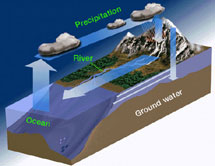
Limestone is an example of a carbonate. Other examples of carbonates include calcite, dolomite, and marble. Limestone dissolves easily in rainwater, especially rainwater which is loaded with carbonic acid.
...more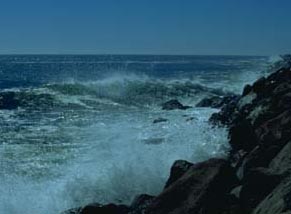
Have you ever left a glass of water out for a long time? Did you notice that the water disappears after a few days? That's because it evaporated! Evaporation is when water passes from a liquid to a gas.
...more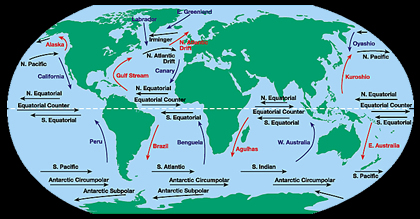
The water at the ocean surface is moved by powerful wind. The wind is able to move the top 400 meters of the ocean. This moving water is called surface ocean currents. Surface ocean currents form large
...more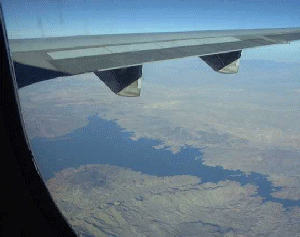
Rivers are very important to Earth because they are major forces that shape the landscape. Also, they provide transportation and water for drinking, washing and farming. Rivers can flow on land or underground
...more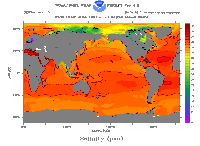
Almost 3/4 of the Earth is covered with water. Almost all of that water is in the oceans. Have you ever been swimming in the ocean? If you have and you accidentally got water in your mouth, you know the
...more


